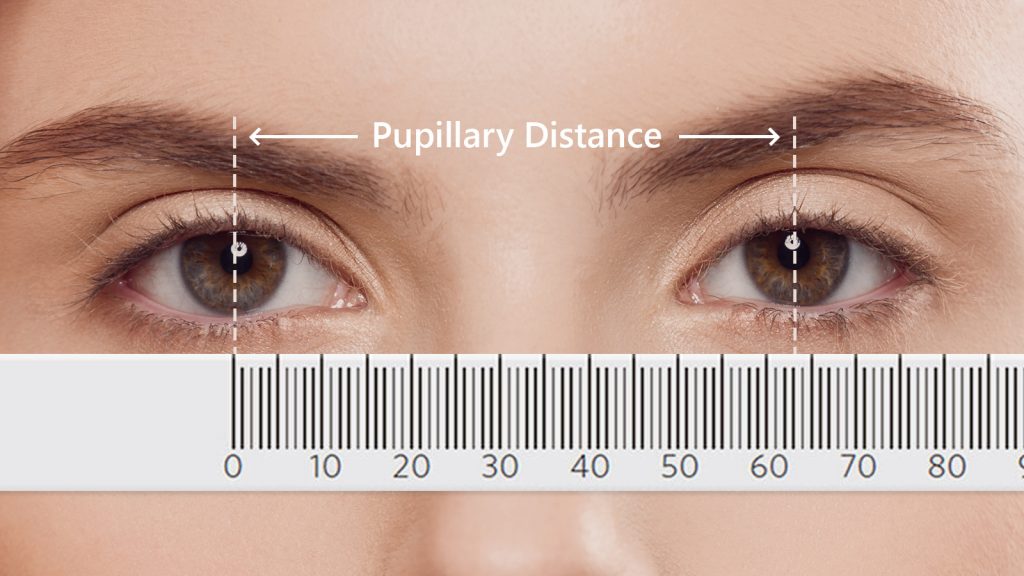
What happens if PD is wrong on glasses?
PD or the pupillary distance of the prescription glasses is of utmost importance. It is not just a number but an essential part of your eyeglasses prescription on the basis of which eyeglasses are manufactured. Even a slight error in measuring the pupillary distance may call for the wrong eyeglasses. If the pupillary distance is wrongly calculated, then certainly the outcome of the eyeglasses will be incorrect as well. Therefore, there are high chances of the user experiencing eye strain, fatigue, headaches and blurry vision. Moreover, people having a high prescription and wearing wrong pupillary distance face even the worst condition. Because it becomes difficult to focus on the objects with such spectacles frames having wrong pupillary distance where the centers of the pupil fail to match.
What is Pupillary distance?
Pupillary distance means the measurement of the distance between the centers of the pupils of both eyes. It is required to craft the focal point in the eyeglasses which lead to clear vision. Everyone has a unique pupillary distance. An adult’s pupillary distance may range from 54mm to 74 mm. Whereas the pupillary distance of kids lies between 43mm to 58 mm. Where every millimetre counts, a change or defect of even a single millimetre may cause creating eyeglasses with wrong focal points or the center for the prescription glasses.
Can I measure pupillary distance with accuracy?
Measuring pupillary distance is pretty easy, either you can do it yourself or can ask someone to help. Take a ruler having millimetre marking. Hold the ruler starting from the center of one eye i.e. the pupil while you look straight in the mirror. Mark the point in the ruler where the pupil of the eye lies. This distance between the pupils of both eyes is your pupillary distance for spectacles frames.
Although, it is an easy method of measuring pupillary distance, but it cannot be considered an accurate method. It requires experience and expertise to measure the accurate pupillary distance. Therefore, it is always recommended to visit your eyewear manufacturer or optical store to get the perfect pupillary distance measured before you buy prescription glasses at the optical store or online marketplace. The optometrist uses Pupillometer, a device to measure pupillary distance, to note down the correct PD for your eyeglasses.
What happens if PD is wrong on glasses?
The effects of wearing spectacles frames with wrong pupillary distance include:
- Blurry Vision
- Headaches
- Double vision images
- Nausea
- Fatigue
- Eye-strain
- Extreme discomfort to people with high prescription, astigmatism and prism effects.
How to find out if PD is wrongly measured?
Take a simple experiment or ask someone to help you. Sir relaxed wearing your eyeglasses, hold your finger straight around 8 inches away from the nose. Now move your finger closer to the nose, if you find it easy to focus on the finger without any strain or squinting the eyes, then your prescription glasses are perfect. However, if you feel the vision blurry or double then your spectacles glasses have the wrong PD.
How to get the correct prescription glasses with wrong PD?
Specscart can help in correcting your existing eyeglasses having wrong focal points. However, you need to undergo a comprehensive eye examination by booking an eye test at home or work to analyse the correct PD measurement. Thereafter, you can send your existing eyeglasses with the wrong PD to Specscart or visit Specscart’s Walkden or Bury store to submit the eyeglasses. Through the process of reglaze glasses, Specscart’s expert technicians will replace the old lens with the corrected ones. Reglaze glasses is a cost-effective method of re-using your old frames of spectacles glasses.
If you are experiencing similar symptoms, immediately replace your prescription glasses or simply reglaze them at Specscart. You do not have to wait for your glasses for long, as Specscart offers express glasses dispatch in 24 hours.


